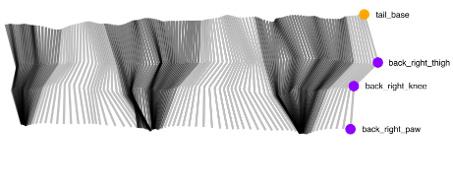
Alona's movements tracked by the SuperAnimal model © Kaosmovies / EPFL 2024
Behavioral analysis can provide a lot of information about the health status or motivations of a living being. A new technology developed at EPFL makes it possible for a single deep learning model to detect animal motion across many species and environments. This "foundational model", called SuperAnimal, can be used for animal conservation, biomedicine, and neuroscience research.
Although there is the saying, "straight from the horse's mouth", it's impossible to get a horse to tell you if it's in pain or experiencing joy. Yet, its body will express the answer in its movements. To a trained eye, pain will manifest as a change in gait, or in the case of joy, the facial expressions of the animal could change. But what if we can automate this with AI? And what about AI models for cows, dogs, cats, or even mice? Automating animal behavior not only removes observer bias, but it helps humans more efficiently get to the right answer.

Today marks the beginning of a new chapter in posture analysis for behavioral phenotyping. Mackenzie Mathis' laboratory at EPFL publishes a Nature Communications article describing a particularly effective new open-source tool that requires no human annotations to get the model to track animals. Named "SuperAnimal", it can automatically recognize, without human supervision, the location of "keypoints" (typically joints) in a whole range of animals - over 45 animal species - and even in mythical ones!

"The current pipeline allows users to tailor deep learning models, but this then relies on human effort to identify keypoints on each animal to create a training set," explains Mackenzie Mathis. "This leads to duplicated labeling efforts across researchers and can lead to different semantic labels for the same keypoints, making merging data to train large foundation models very challenging. Our new method provides a new approach to standardize this process and train large-scale datasets. It also makes labeling 10 to 100 times more effective than current tools."






